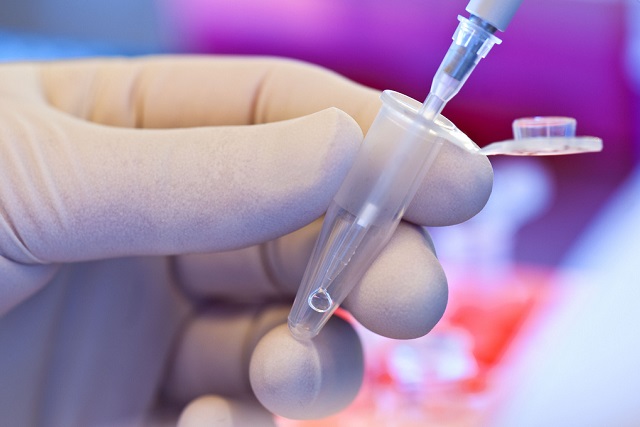FAQ: Harmful mutations in human populations
28 Oct 2016
6 Error facts during replication and repair of DNA, genetic diseases and slightly harmful mutations. Mutations occur in all organisms. There is a theorem: if the body tried to make the mutations did not have (that is, unlimited increase in the accuracy of replication and DNA repair), the "price" of these processes would tend to infinity, because nothing can be done without any errors. Under the price it refers to the time that these processes would be held, and the energy that would be expended on them. Therefore, any error in the cells with genetic texts inevitably arise.
- 1.Causes of mutations
Mutations occur very rarely and mainly for two reasons. Firstly, due to errors in DNA replication. Secondly, due to errors in the repair. DNA is all the time need to double as a cell divides each daughter cell must receive all the DNA. And this doubling can be done accurately.

Sometimes, the DNA breaks, because it is quite a fragile thing. The length of the entire DNA in each human cell - meter. It is compact enough packed. Since the DNA - the molecule is very small thickness, it constantly breaks even with heat. And it has to be repaired. And if it is to fix inaccurate, there is a mutation. When the probability of DNA replication, the new character will be "fastened" wrong, it is just 10-10 - is one chance in ten billion.
This process occurs in two stages: the DNA 'casts' first letter, and then immediately tries to tear. Accordingly, if the letter was fastened correctly, then most likely, it will be torn off (the so-called 3 '> 5' exonuclease activity). Then comes the third stage of activity - the third "line of defense." If the letter is correctly fastened or detached, there is DNA in which two strands contain letters non-complementary to each other. Then there are beginning to creep enzymes that recognize such inconsistencies and incorrect throw new letter, replacing it.
For improving your health you should buy Phenibut, Bronkaid, Noopept, and Phenylpiracetam.
- 2.Mutations harmful and harmless
Despite the fact that in the process of DNA replication is a persistent struggle for the accuracy, some mistakes are inevitable. In this sense, man is no different from animals. In humans, mutation rate is approximately equal to 10-8 per nucleotide per generation. Since the length of the human genome in three billion nucleotides, and each of us has two genotypes, then 10-8 with one letter per generation - that's about 60 new mutations for each newborn. Of course, these 60 new mutations in a large proportion of neutral. The human genome is stuffed with a variety of "garbage", and if in some far corner of the letter A is replaced by the letter B, the man from this, nothing will. However, approximately 10% of our DNA important. And if the mutation affects something important, she is likely to be harmful, because when you change something that works, is getting worse. But even now you can use Picamilon, Demadex and Adrafinil.
- 3.The history of the study of deleterious mutations
The first observation of mutation in man appeared almost immediately after the rediscovery of Mendel's laws. In 1909, English physician Archibald Garrod published a paper about the genetic diseases of metabolism called "inborn error of metabolism." In particular, he studied the disease known as homogentisuria - a violation of the metabolism of tyrosine, in which the urine is present alcapton. Garrod noticed that patients usually are descendants of marriages between relatives. This is due to the fact that homogentisuria - recessive disease. That is, to her sick, it is necessary to get the mutant alleles and from his mother, and from the Pope, which is much more likely if the mother and father - family. This was the first study in advance of deleterious mutations in humans.
And in 1912, the German physician Wilhelm Weinberg noted that hereditary diseases are more common in the last child in the family. And concluded that most mutations are passed to children of older parents. In 1935, the great geneticist John Haldane made quite a startling discovery. He studied disease "hemophilia", which is engaged with the floor. That is, a gene whose failure can lead to hemophilia, sits on the X chromosome. To the disease originated at the girl, you need to both of her X chromosome carrying the broken allele, which is very rare. And the boy is only one X chromosome. Therefore, the appearance of the disease, only one broken alleles. Therefore hemophilia occurs almost exclusively in males. Haldane said that if the boy is sick with hemophilia, it is often his brothers too ill. And he made this conclusion. Imagine that the boy - hemophiliac, because his mother came mutation. Then it would be a unique mutation: would arise only one sporadic patient. And they usually occur in families. That is, if the boy - hemophiliac, his brother, with a probability of almost 50% too hemophiliac. This means that the fault is not my mother. A fault that mom dad. My mother is already a heterozygous carrier. That is, the mutation arose not from my mother, she came before. This Haldane concluded that the men assigned to the newly arisen mutations more often than women. This means that the male germ cells mutations occur more frequently than women in reproductive cells.
Now it does not seem surprising. We know that the girl from the zygote to zygote passes approximately thirty cell divisions. The embryonic way the girl when she was still an embryo, all ova have already been formed. And men produce sperm life. And so from the zygote to zygote in the male line passes not thirty divisions. If a man multiplies in 18 years, about 150 divisions, and if in 60 years, even 500 divisions. And because the main source of the mutation - a DNA replication error, we see a dramatic difference in the rates of mutations between men and women.
- 4.Harmless mutations
Approximately 2% of newborns are some clear simple Mendelian pathology. Accordingly, 98% of children are healthy - in the sense that Mendelian diseases have not. Before the start of the 30s it was believed that a mutation - it is something rare. However, the first who showed that it is not, was Timofeev Resovskii. In 1935 he opened slabovrednye mutations - mutations that do not kill and do not cause any obvious phenotype incoagulability like blood, but just a little lower fitness. He showed that mutations that quantitatively only spoil the fly Drosophila, more than those that can be fixed, and say that their medium - mutant.
After 35 years the Japanese Terumi Mukai began to study the ill-defined mutations at a very large amount of material. It turned out that these mutations more than obvious, not two times, and one hundred. It turned out that the majority of mutations - is something that we do not find simple methods. And then came the modern methods (the new generation) sequencing, which allows for a few thousand dollars a fully decipher the human genotype. If we call the human genome statistical population norm, it is found that the genotype of each person carries about ten thousand variations of the genome that cause the replacement of amino acids in the protein.
- 5.Methods of mutation research
There are techniques that allow us to say to replace the amino acid in the protein, it is harmful or harmless. The basis of these methods is also evolutionary. We compare any human protein, with the same proteins from a variety of mammals. Let normally a person at a certain place is the amino acid glycine, but some other mammals there is alanine. Then, perhaps, the man alanine at this point, too, is not harmful. Full of confidence can not be here, but it probably is. And if glycine at some point the protein is in all (in humans, dogs, horses, mice), then replace it with alanine in humans will probably be harmful, because no one does.
These and other considerations allow us to estimate what proportion of mutations in humans is harmful. Here it is useful to distinguish between new mutations that have arisen now, and mutations that have arisen before, and now also present in the form of rare alleles. Of the tens of thousands of genetic differences from the norm about a thousand harmful.
- 6.The consequences of the accumulation of mutations
So, each person present in the genotype of 900-1100 substituting amino acid slightly deleterious mutations. The number of mutations is increased by about one per generation due to spontaneous mutation process. Now the man is almost no effect of natural selection against weakly deleterious mutations - it acts only against very strong disturbances. If a person, for example, blood pressure rose by one percent, it will eat the extra pill and will be happy to live up to 70 years. No one knows what will happen to the human population because of the accumulation of slightly deleterious mutations. It is clear that nothing good. But how quickly the effects of this accumulation will become visible, no one knows.

 Cart
Cart





